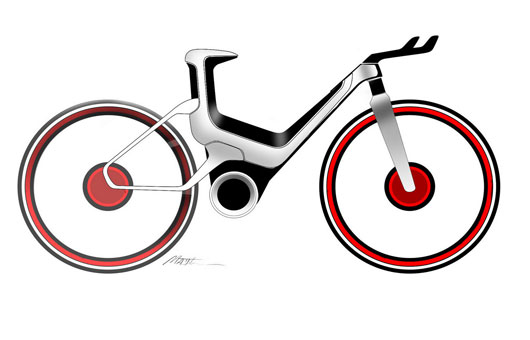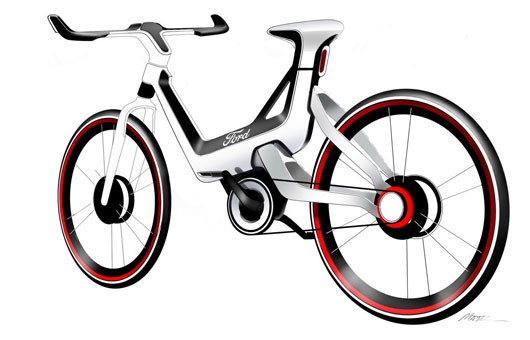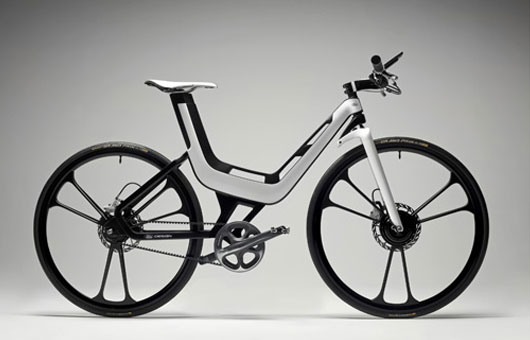Ford Executive Design Director Martin Smith, in partnership with German Brand cyber-Wear, have created the first ever E-bike prototype for the Ford Motor Company.
The impressive light-weight bike provides a glimpse of how we might all commute in the future. Its cross-gender design combines cutting-edge sensor technology from Formula One racing, with state-of-the-art bicycle components.
The bike which may or may not go into production was created by Ford to demonstrate how the car company’s design language could be translated to a bicycle.
“The E-Bike market is growing very, very rapidly, with some 30 million units sold globally last year,” says Axel Wilke, director of vehicle personalisation at the Ford Customer Service Division in Europe.
“We see E-Bikes as an important element of urban electric mobility. With more and more people using E‑Bikes for short distance commuting, we believe people are becoming comfortable with the concept of electric mobility," Wilke says.
Indeed the Ford E-bike when fully charged promises users a car competitive speed of up to 85km.
The overall design of the Ford E-bike prototype is clean and minimal, with the mainframe constructed from aluminium and carbon. The frame itself offers outstanding strength and weighs only 2.5kg. At the heart of the design is a trapezoidal frame, that connects the profile to the wheels with a six-spoke V-design.
To make the bike quick there is a motor in the front wheel hub, that uses a lithium-ion battery concealed in the frame.
An integrated controller and patented ‘magnetostriction sensor’ is also concealed in the frame. Wilke explains this is the one key high tech element borrowed direct from Ford’s Formula One design studio.
“Magneotostrictive materials are used to convert magnetic energy into kinetic energy, and vice versa," says Wilke. “In Formula One, these sensors help handle high engine revolutions in combination with intense thermal strains. They need no physical contact with other parts of the engine, are temperature-independent and are completely maintenance-free,” he says.
"In the Ford E-Bike we see the very first application of this technology in the bicycle industry. A hint at the further hybridisation of e-bike technology we can expect to see in the future," says Wilke.
For more information regarding Ford’s products, please visit:



